
Murasaki Shikibu was a Japanese novelist, poet and lady-in-waiting at the Imperial court in the Heian period. She is best known as the author of The Tale of Genji, widely considered to be one of the world's first novels, written in Japanese between about 1000 and 1012. Murasaki Shikibu is a descriptive name; her personal name is unknown, but she may have been Fujiwara no Kaoriko (藤原香子), who was mentioned in a 1007 court diary as an imperial lady-in-waiting.

The Tale of Genji is a classic work of Japanese literature written in the early 11th century by the noblewoman and lady-in-waiting Murasaki Shikibu. The original manuscript, created around the peak of the Heian period, no longer exists. It was made in "concertina" or orihon style: several sheets of paper pasted together and folded alternately in one direction then the other.

The Kansai region or the Kinki region lies in the southern-central region of Japan's main island Honshū. The region includes the prefectures of Nara, Wakayama, Kyoto, Osaka, Hyōgo and Shiga, often also Mie, sometimes Fukui, Tokushima and Tottori. The metropolitan region of Osaka, Kobe and Kyoto is the second-most populated in Japan after the Greater Tokyo Area.
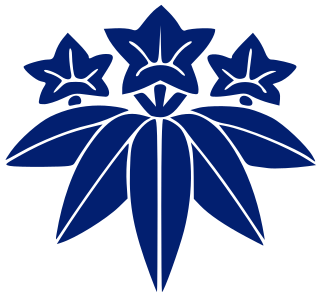
Minamoto (源) was a noble surname bestowed by the Emperors of Japan upon members of the imperial family who were excluded from the line of succession and demoted into the ranks of the nobility since 814. The Minamoto were one of four great clans that dominated Japanese politics during the Heian, Kamakura, Muromachi and Edo periods of Japanese history—the other three were the Fujiwara, the Taira, and the Tachibana.
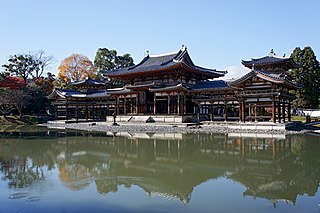
Uji is a city on the southern outskirts of the city of Kyoto, in Kyoto Prefecture, Japan.

The Yodo River, also called the Seta River and the Uji River at portions of its route, is the principal river in Osaka Prefecture on Honshu, Japan. The source of the river is Lake Biwa in Shiga Prefecture to the north.

JOIX-DTV, branded as Yomiuri TV, is the Kansai region flagship station of the Nippon News Network and the Nippon Television Network System, owned by the Yomiuri Telecasting Corporation subsidiary of the eponymous Yomiuri Shimbun Holdings, Japan's largest media conglomerate; Yomiuri TV forms part of Yomiuri's main television broadcasting arm alongside Kantō region flagship Nippon TV, which owns a 15.89% share in the company. Founded as New Osaka Television Co. on February 13, 1958, and renamed Yomiuri Telecasting Corporation on August 1, the station started broadcasting on August 28 as the first TV station to be affiliated with Nippon Television Network Corporation. Its studios are located in the Osaka Business Park district of Osaka.

Monogatari is a literary form in traditional Japanese literature – an extended prose narrative tale comparable to the epic novel. Monogatari is closely tied to aspects of the oral tradition, and almost always relates a fictional or fictionalized story, even when retelling a historical event. Many of the great works of Japanese fiction, such as the Genji Monogatari and the Heike Monogatari, are in the monogatari form.
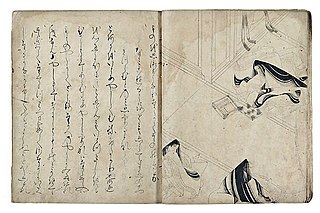
Ukifune is the nickname of a princess in The Tale of Genji, the unrecognized daughter of the Eighth Prince. The 51st chapter of the story is named after her. Literally, Ukifune means "A Boat Set Adrift"; her real name is not specified.
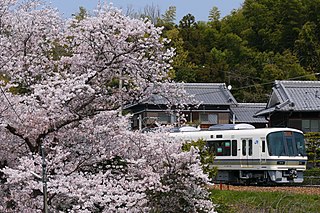
The Nara Line is a commuter rail line in the Osaka–Kobe–Kyoto metropolitan area, operated by the West Japan Railway Company. Its official termini are Kizu Station in Kizugawa and Kyōto Station in Kyoto, within Kyoto Prefecture; however, all trains continue past Kizu on the Yamatoji Line to Nara Station in Nara, Nara Prefecture.

The Katsura River is a continuation of two other rivers, the Hozu River, a small, speedy river which begins in the mountains near Kameoka and then slithers through the mountains separating Kameoka and Kyoto; and the Ōi River, which emerges from those mountains and expands into a shallow, slow-flowing river until Togetsukyo Bridge in Arashiyama. From that point forward, the river is referred to as the Katsura River, and its flow continues for several kilometers through Kyoto Prefecture until it joins the Kamo and Uji rivers.
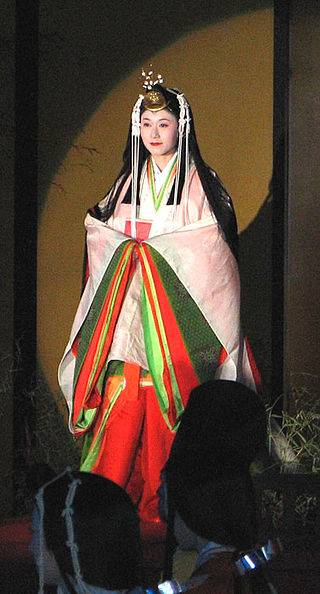
A saiō (斎王) or itsuki no miko was an unmarried female member of the Japanese Imperial Family, sent to Ise to serve at Ise Grand Shrine from the late 7th century until the 14th century. The saiō's residence, Saikū (斎宮), was about 10 km (6.2 mi) north-west of the shrine. The remains of Saikū are situated in the town of Meiwa, Mie Prefecture, Japan.
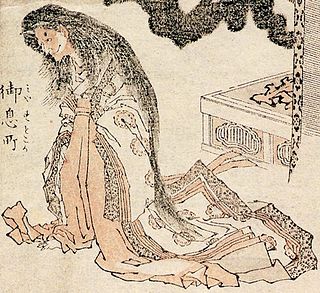
Lady Rokujō is a fictional character in The Tale of Genji. She is a mistress of the novel's protagonist, Hikaru Genji, with whom she becomes infatuated with and jealous of his other lovers. Her jealousy subconsciously causes her ikiryō to become a Shiryo that attacks and murders multiple other mistresses and wives of Genji.
Kaoru is a fictional character in The Tale of Genji. He only appears as the lead for the novel's third act, called the 'Uji Jujo'. Kaoru has been called the first anti-hero in literature and is known for always having a strange but pleasant smell around him. He is known to be comparatively calculated and calm, and somewhat of an overthinker, as opposed to his love rival and close friend, Niou, who happens to be more "passionate" than he is.

Fushimi Station is a railway station on Kintetsu Railway's Kyoto Line located in Fushimi, Kyoto, Japan.

Ishiyama-dera is a Shingon temple in Ōtsu in Japan's Shiga Prefecture. This temple is the thirteenth of the Kansai Kannon Pilgrimage.

Momoyama-minamiguchi Station is a train station located in Fushimi-ku, Kyoto, Kyoto Prefecture, Japan.

Uji Station is a train station on the Keihan Railway Uji Line in Uji, Kyoto Prefecture, Japan, and it is the terminal station on the Uji Line.

Nison-in is a Tendai Buddhist temple complex in Ukyō-ku, a western ward in the city of Kyoto, Japan. The temple's official name is Ogura-yama Nison-kyō-in Keidai-ji. The temple is a popular destination during the Japanese maple viewing season.
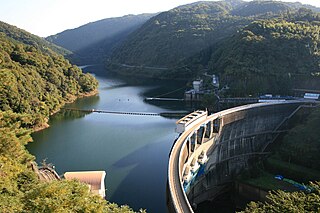
The Amagase Dam (天ヶ瀬ダム) is an arch dam on the Uji River just upstream from Uji, Kyoto Prefecture, Japan. The main purpose of the dam is flood control but it supports a hydroelectric power station and creates the lower reservoir for the Kisenyama Pumped Storage Plant. The dam itself serves a 92 MW power station while the pumped-storage power station upstream has a 466 MW capacity. Construction on the dam began in 1955 and it was complete in 1964. The pumped-storage power station became operational in 1970. Both plants are owned by Kansai Electric Power Company.





























